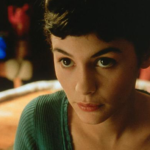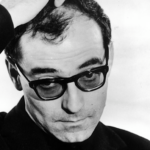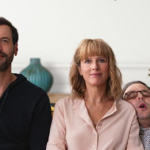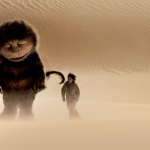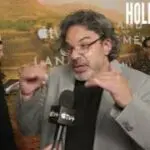Table of Contents
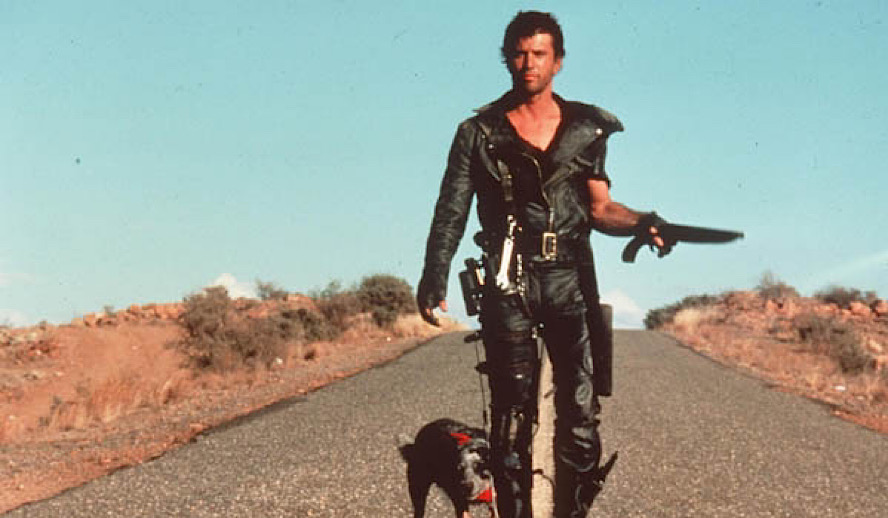
Video Version of this Article
Photo: The Australian New Wave Movement/Hollywood Insider YouTube Channel
In the wake of the Second World War and the spectacular implosion of the American studio system, global cinema lay at a grand crossroads. The path ahead lay unmarked and the rules and regulations largely unwritten. Within this age of uncertainty, many young minds saw the potential for an unprecedented freedom as well as the ability to challenge the overworn and reductive tropes the medium had amassed. A swell of unique and anomalous voices from around the world combined into what would come to be called the New Wave movement. This seismic reshuffling was defined by its heavy iconoclastic bent and desire to subvert and re-contextualize the cinematic norms and limitations that defined each country’s prior film history.
Related article: A Tribute to Hugh Jackman: His Rise and Journey from Theater to Superhero
Related article: Analyzing ‘Mad Max: Fury Road’ – All Hail Charlize Theron’s Imperator
The Australian New Wave Movement
Beginning in France in the mid-195os and originating from the discovery of Italian neo-realism and American film noir after the war, the early days of the movement were defined by the likes of Jean-Luc Goddard, François Truffaut, and Agnes Varda. The United States saw the arrival of the movement in the late 1960s with the lauded release of ‘Bonnie and Clyde’ (1967). So began the lionized domain of the New Hollywood era of American cinema.
Featuring the emergence of celebritzed auteurs like Martin Scorsese and Francis Ford Coppolla, the period has been best remembered by modern audiences for its iconic output in the United States. Film scholars challenging this notion have stressed the importance of Italy, France, and the Nordic States, but they too have left out one of the most daringly essential members of the New Wave clan: Australia.
Australia’s film history lay on the brink of oblivion in the postwar years of the 1950s, stalling completely by the early 1960s. But after a herculean fiscal push from the incoming political regime in 1968 and the founding of the Australian Film, Television, and Radio School, a bold generation of Australian filmmakers set out to paint a distinctly different picture of the country and its history.
Related article: MUST WATCH – Hollywood Insider’s CEO Pritan Ambroase’s Love Letter to Black Lives Matter – VIDEO
Subscribe to Hollywood Insider’s YouTube Channel, by clicking here.
The Inception of the Era – ‘Walkabout’ and ‘Wake in Fright’
The early days of the Australian film renaissance saw the crystallization of the formative tropes and tenets that would go on to define the mood and style of the films to follow. These films were largely de-narrated and instead focused heavily on the sprawling Australian landscape setting to tell their stories.
Towards the beginning, as was often seen in most countries’ New Wave movement, the stories tended to directly challenge and impugn the existing national and historical iconography. The Australian New Wave movement also saw a conscious fixation on the oppositional contrast between the domesticated city and the unbound natural world that lay waiting on the other side. Perhaps no two films ever articulated this divide better than Nicolas Roeg’s ‘Walkabout’ (1971) and Ted Kotcheff’s ‘Wake in Fright’ (1971).
After his debut feature ‘Performance’ (1970), British director Nicolas Roeg turned his attention to the untapped cinematic potential of the Australian outback and began to construct a loose adaptation of James Vance Marshall’s 1959 novel Walkabout. Roeg’s film still centered on two children lost in the wild, except they were abandoned by their maniacal father rather than by plane crash. The two children, Jenny Agutter’s Girl and the director’s son Luc Roeg as Boy, are then forced to make their way through the unrelenting wilderness, only saved by the meeting of David Gulpilil’s Aboriginal Boy.
As is the tradition of aborigine culture, sixteen-year-old boys are sent into the wild to survive off of the land for months to become a man in a practice called a walkabout. Gulpilil’s character is on a walkabout of his own when he meets Agutter and Roeg, taking them along with him and forming a bond transcending language, creed, or culture. The shoot was characterized by frequent improvisation and happenstance, with Roeg often shooting whatever natural formations the crew came across. While far from a success upon its release, ‘Walkabout’ has endured as a stirring and surprisingly gentle portrait of nature’s inane beauty and the harrowing transformation of adolescence into adulthood.
The near antithesis of the aforementioned ‘Walkabout’, Ted Kotcheff’s ‘Wake in Fright’ (1971) serves as one of the most deeply unsettling cinematic texts of the era. The film centers on Gary Bond’s bonded teacher John Grant attempting to reach Sydney on holiday and getting stuck in the desert mining town of Bundanyabba, or ‘The Yabba’ as the residents lovingly refer to it. Through a series of increasingly nightmarish events and an ungodly amount of alcohol, Grant is continuously thwarted in his attempts to escape the town. A clear contradiction is established between the English Grant and the Australian lifestyle of the Yabbanites, and it is only upon experiencing the monstrous effects of the inexorable heat and isolation for himself and falling to the lowest point imaginable that he is able to move forward and accept his tenure in the outback.
The Arrival of Peter Weir – ‘Picnic at Hanging Rock’ and ‘The Last Wave’
Likely no emergent Australian director became a bigger Hollywood player than Peter Weir. After his critically acclaimed tenure in the Aussie New Wave, the director came to the United States and directed iconic award-winning films such as ‘Dead Poets Society’ (1989) starring Robin Williams and ‘The Truman Show’ (1998) starring Jim Carrey. Weir’s first film was the low-budget cult classic ‘The Cars That Ate Paris’ (1974), but it was his sophomore venture that truly separated him from the pack.
In 1975, Weir released the internationally renowned ‘Picnic at Hanging Rock’, adapted from Joan Lindsay’s 1967 novel of the same name. The story centered around the supposedly true disappearance of three young schoolgirls and their teacher while on a day trip to the ethereal Hanging Rock in the year 1900, as well as the reverberating effects it had on all those around them. The film is coated with an intangible air of surreal dread that does not depart until the credits begin to roll, drawing audiences deeper and deeper into the mysterious symbology of the disappearance, the feminine repression of the era, and Hanging Rock itself. Many often connect this film with later gothic mysteries from the likes of David Lynch and noted fan Sofia Coppolla. Weir’s second feature was a success on all fronts, mystifying audiences for decades and drawing countless new eyes to the filmic exports of the land down under.
Related article: Hollywood Insider’s CEO Pritan Ambroase: “The Importance of Venice Film Festival as the Protector of Cinema”
Related article: The Masters of Cinema Archives: Hollywood Insider Pays Tribute to ‘La Vie En Rose’, Exclusive Interview with Director Olivier Dahan
Related article: – Want GUARANTEED SUCCESS? Remove these ten words from your vocabulary| Transform your life INSTANTLY
Weir’s follow-up, ‘The Last Wave’ (1977), offered a similarly cryptic and symbolically rich tale of a white lawyer plagued by visions of a watery apocalypse who takes on the case of a group of city-dwelling aboriginal men accused of murder. An immense story of cultural clash and mystical prophecy, the lawyer, played by Richard Chamberlain, discovers his own esoteric connection to the men he is representing, particularly David Gulpilil’s Chris Lee, and the aborigine conception of Dreamtime.
Few films of the era devoted substantial narrative attention to the aboriginal population in Australia, let alone treat their rituals and customs with the seriousness and sincerity that Weir put into ‘The Last Wave’. The film steers clear of caricature and instead seeks to actualize and elucidate the spiritual history of the aboriginals for both the central protagonist and the audience along with him.
The Transition to Ozploitation – ‘Long Weekend’ and ‘Mad Max’
Up until the late 1970s, many of the films produced in the Australian New Wave existed largely outside of the typical film genre format. It was often common for the films of the era to be many genre pieces folded into one, more expressionistic rather than strictly-bound. This pattern was disrupted by the development of “Ozploitation”, a pun on the genre-bent exploitation films that became frequent in 1980s Australian cinema. Quentin Tarantino, who is a massive fan of the movement, first coined the term in a 2008 documentary, referring to it as the age of “Aussieploitation”. Raunchy comedies, biker films, and horror movies made up the brunt of the output, and they lent themselves perfectly to the financial limitations that most national filmmakers at the time were constrained within.
Related article: A Tribute to Toni Collette: A Chameleon of the Silver Screen
Related article: Eric Bana’s ‘The Dry’: Blistering Australian Mystery Thriller is One of 2021’s Best
Colin Eggleston’s ‘Long Weekend’ (1978) was one of the first out-right horror films to be made on the continent and became a lesser-known but nevertheless formative stepping stone. Featuring only one substantial location and only two primary cast members, the film was able to be made for a diminutive sum. ‘Long Weekend’ tells the story of a profoundly irreconcilable married couple on the verge of divorce taking a camping trip to a remote beach.
The only thing the pair seem to care less about than each other is nature, wreaking carnage on the wildlife. After strange occurrences begin to transpire, phantom infantile cries in the night, and encroaching animal attacks, the pair are forced to face their own cruel demons and their own withering relationship. Featuring wicked performances from John Hargreaves and Briony Behets and perfect utilization of the Australian coastline, ‘Long Weekend’ survives as a startling reminder of nature’s power.
As Mel Gibson’s star fades and Tom Hardy’s continues to ascend, so too have their respective interpretations of the iconic Max Rockatansky in the ‘Mad Max’ franchise. With the explosive release of George Miller’s long-awaited fourth installment, the winner of six Academy Awards, ‘Mad Max: Fury Road’ (2014), it is easy to forget about the character’s humble beginnings within the Ozploitation movement in ‘Mad Max’ (1979).
Related article: A Tribute to Agnès Varda: The Mother of the French New Wave Film Movement
Related article: Actors That Took It Too Far: The Dangers Of Stunt Work and Method Acting
If one were to pair the original with the latest entry and remove the titles, most would be hard-pressed to guess the duo shared anything in common, let alone membership in the same quadrilogy, but nonetheless, the films share the conceit of a road warrior fighting in the shadow of a collapsed society. No other Australian IP has ever rivaled ‘Mad Max’ in notoriety or popularity, and the character has endured for over forty years, even if the thematic throughline has not.
Other exemplary suggestions from the Australian New Wave include: ‘The Man from Hong Kong’ (1975), ‘The Devil’s Playground’ (1976), ‘Don’s Party’ (1976), ‘The Getting of Wisdom’ (1977), ‘The Chant of Jimmie Blacksmith’ (1978), ‘Money Movers’ (1978), ‘My Brilliant Career’ (1979), ‘Breaker Morant’ (1980), ‘Gallipoli’ (1981), ‘Mad Max 2: The Road Warrior’ (1981), and ‘The Year of Living Dangerously’ (1982).
Click here to read Hollywood Insider’s CEO Pritan Ambroase’s love letter to Black Lives Matter, in which he tackles more than just police reform, press freedom and more – click here.
An excerpt from the love letter: Hollywood Insider’s CEO/editor-in-chief Pritan Ambroase affirms, “Hollywood Insider fully supports the much-needed Black Lives Matter movement. We are actively, physically and digitally a part of this global movement. We will continue reporting on this major issue of police brutality and legal murders of Black people to hold the system accountable. We will continue reporting on this major issue with kindness and respect to all Black people, as each and every one of them are seen and heard.
Just a reminder, that the Black Lives Matter movement is about more than just police brutality and extends into banking, housing, education, medical, infrastructure, etc. We have the space and time for all your stories. We believe in peaceful/non-violent protests and I would like to request the rest of media to focus on 95% of the protests that are peaceful and working effectively with positive changes happening daily. Media has a responsibility to better the world and Hollywood Insider will continue to do so.”
Ways to support Black Lives Matter Movement to end systemic racism
More Interesting Stories From Hollywood Insider
– Want GUARANTEED SUCCESS? Remove these ten words from your vocabulary| Transform your life INSTANTLY
– Compilation: All James Bond 007 Opening Sequences From 1962 Sean Connery to Daniel Craig
– Do you know the hidden messages in ‘Call Me By Your Name’? Find out behind the scenes facts in the full commentary and In-depth analysis of the cinematic masterpiece
– A Tribute To The Academy Awards: All Best Actor/Actress Speeches From The Beginning Of Oscars 1929-2019 | From Rami Malek, Leonardo DiCaprio To Denzel Washington, Halle Berry & Beyond | From Olivia Colman, Meryl Streep To Bette Davis & Beyond
– In the 32nd Year Of His Career, Keanu Reeves’ Face Continues To Reign After Launching Movies Earning Over $4.3 Billion In Total – “John Wick”, “Toy Story 4”, “Matrix”, And Many More
australian new wave movement, australian new wave movement, australian new wave movement, australian new wave movement, australian new wave movement, australian new wave movement, australian new wave movement, australian new wave movement, australian new wave movement, australian new wave movement, australian new wave movement, australian new wave movement, australian new wave movement, australian new wave movement, australian new wave movement, australian new wave movement, australian new wave movement, australian new wave movement, australian new wave movement, australian new wave movement, australian new wave movement

Andrew Valianti is a writer and an aspiring producer-director, and all-around film lover. While writing both features and reviews for the Hollywood Insider, Andrew has focused on the intersection of cinema and politics as they relate to empowering diverse stories and viewpoints. Through both study and practice, Andrew has seen first hand the many ways in which film and media can have a positive and meaningful impact on everyday lives. His personal views align with the Hollywood Insider, as he views journalism as a means to empower and mobilize positive change rather than spread gossip or negativity. He believes that art ignites action and has sought to pursue stories that further this goal.

